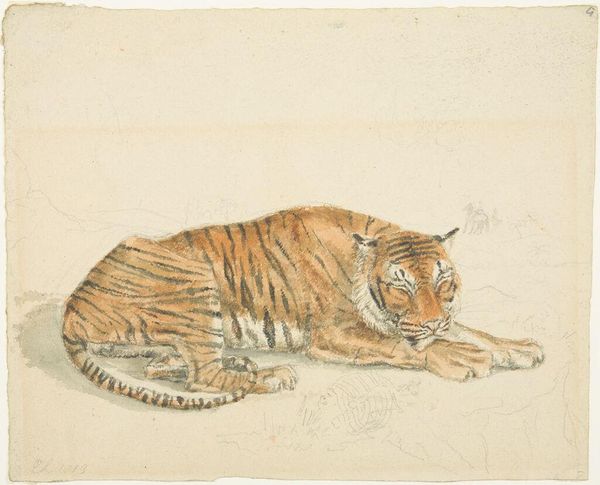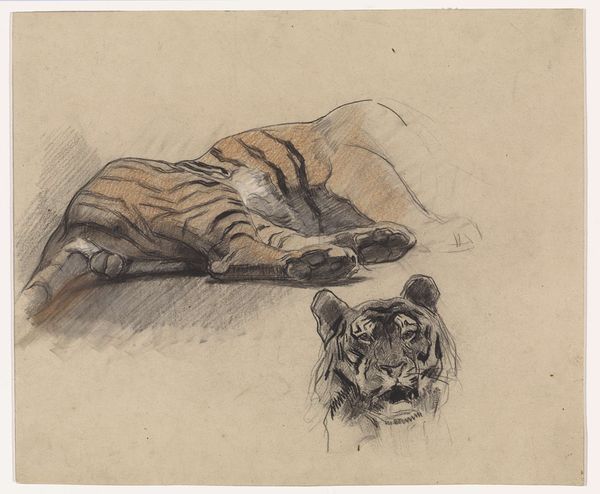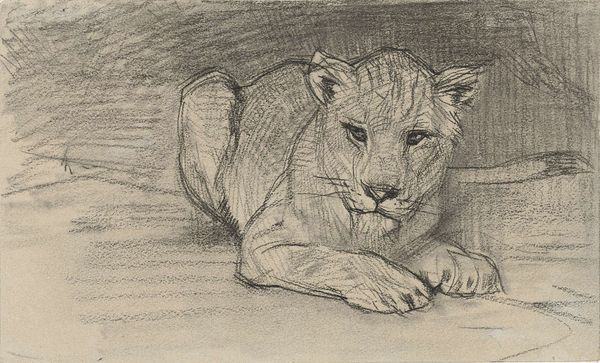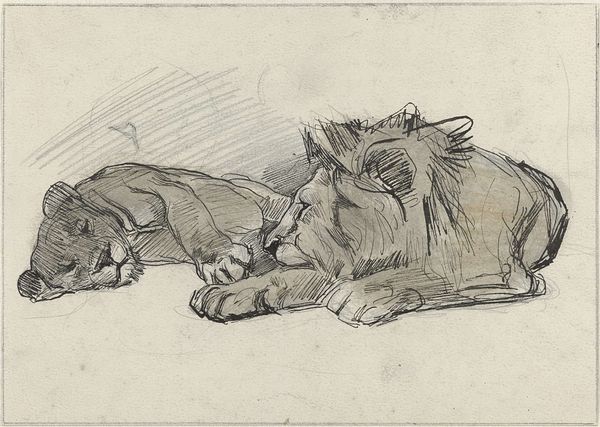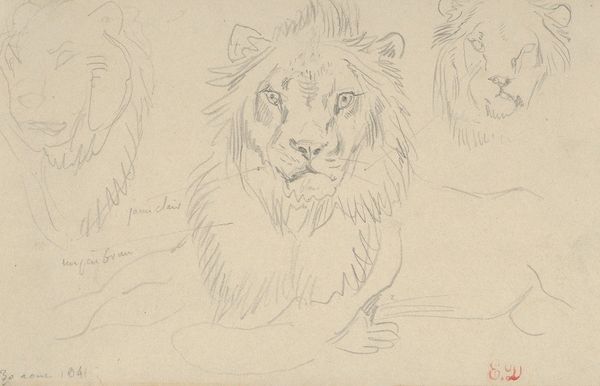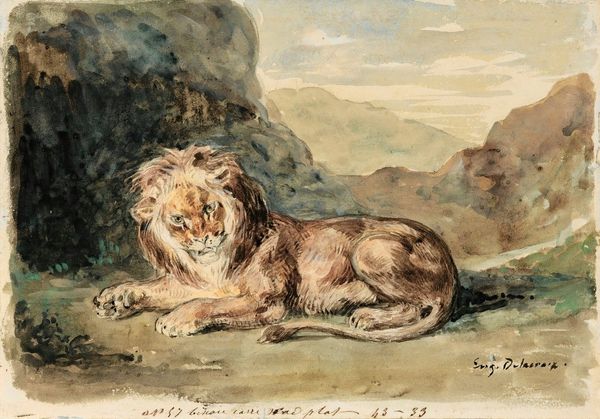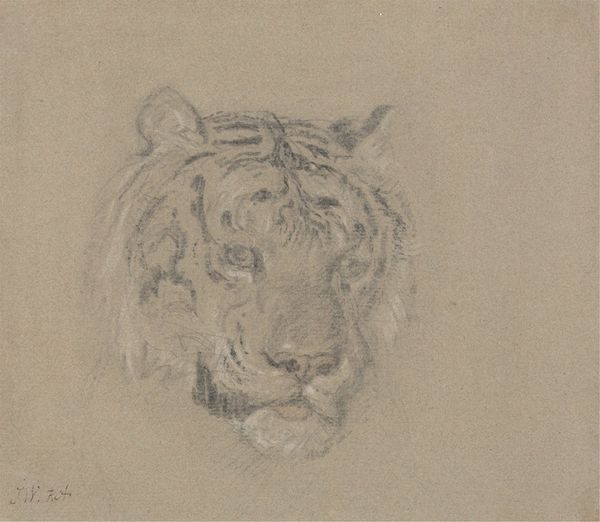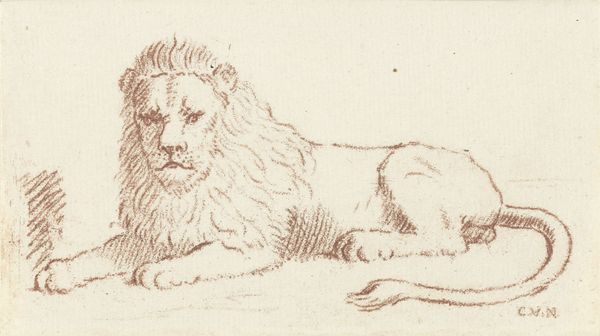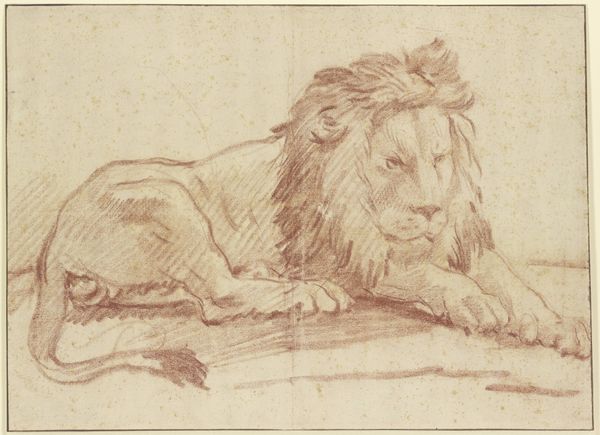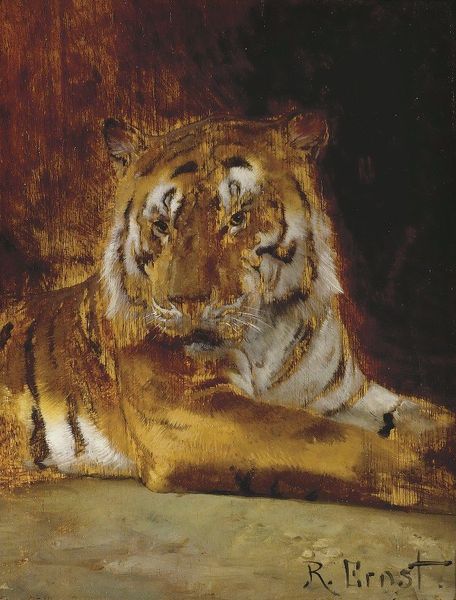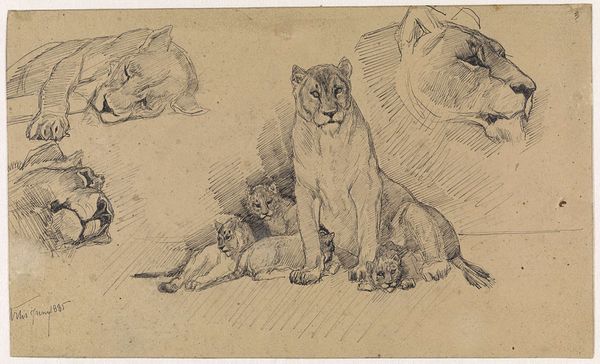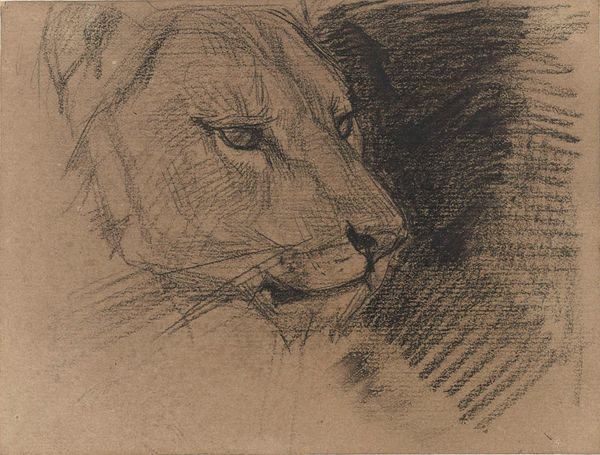
Vleesetende leeuw, van voren gezien, uitkomende tegen een donker fond 1824 - 1829
0:00
0:00
drawing, painting, watercolor, ink
#
drawing
#
narrative-art
#
animal
#
painting
#
figuration
#
watercolor
#
ink
#
romanticism
Copyright: Public Domain: Artvee
Eugène Delacroix created this watercolor painting of a lion emerging from a dark background during the height of the Romantic era. Delacroix, like many artists of his time, was drawn to the power of nature and the raw emotion it could evoke. The painting reflects the 19th-century European fascination with the ‘Orient’ and the exotic ‘other.’ Colonialism fueled this interest, framing Africa as both dangerous and alluring. The lion, a symbol of untamed power, embodies this duality. He is caught in a moment of primal consumption, a graphic, predatory act. The dark backdrop emphasizes the animal’s predatory nature, heightening the sense of danger and otherness. While Delacroix never explicitly commented on his choice of subject, the painting suggests themes of dominance, survival, and the confrontation with the wild. In its stark depiction of a lion consuming its prey, this work offers a window into the complex relationship between humans, nature, and the colonial gaze.
Comments
No comments
Be the first to comment and join the conversation on the ultimate creative platform.
